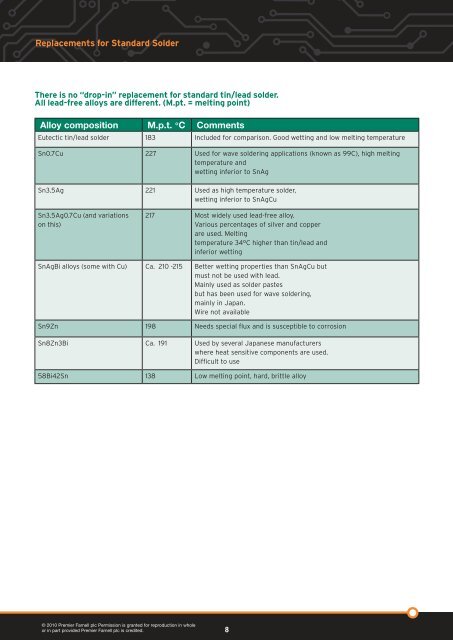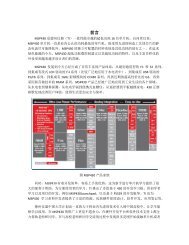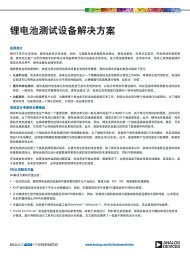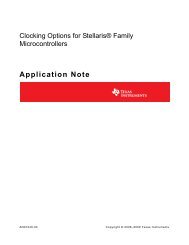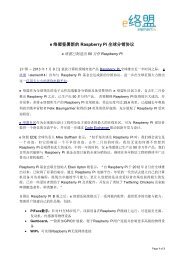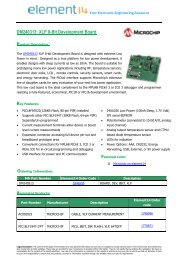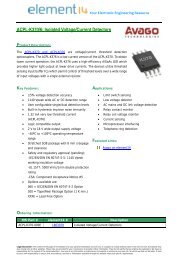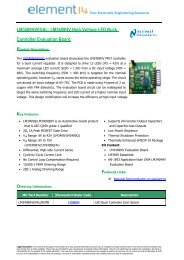RoHS Directive Technical Guide
RoHS Directive Technical Guide
RoHS Directive Technical Guide
You also want an ePaper? Increase the reach of your titles
YUMPU automatically turns print PDFs into web optimized ePapers that Google loves.
Replacements for Standard Solder<br />
There is no “drop-in” replacement for standard tin/lead solder.<br />
All lead-free alloys are different. (M.pt. = melting point)<br />
Alloy composition M.p.t. °C Comments<br />
Eutectic tin/lead solder 183 Included for comparison. Good wetting and low melting temperature<br />
Sn0.7Cu 227 Used for wave soldering applications (known as 99C), high melting<br />
temperature and<br />
wetting inferior to SnAg<br />
Sn3.5Ag 221 Used as high temperature solder,<br />
wetting inferior to SnAgCu<br />
Sn3.5Ag0.7Cu (and variations<br />
on this)<br />
© 2010 Premier Farnell plc Permission is granted for reproduction in whole<br />
or in part provided Premier Farnell plc is credited.<br />
217 Most widely used lead-free alloy.<br />
Various percentages of silver and copper<br />
are used. Melting<br />
temperature 34°C higher than tin/lead and<br />
inferior wetting<br />
SnAgBi alloys (some with Cu) Ca. 210 -215 Better wetting properties than SnAgCu but<br />
must not be used with lead.<br />
Mainly used as solder pastes<br />
but has been used for wave soldering,<br />
mainly in Japan.<br />
Wire not available<br />
Sn9Zn 198 Needs special flux and is susceptible to corrosion<br />
Sn8Zn3Bi Ca. 191 Used by several Japanese manufacturers<br />
where heat sensitive components are used.<br />
Difficult to use<br />
58Bi42Sn 138 Low melting point, hard, brittle alloy<br />
8


